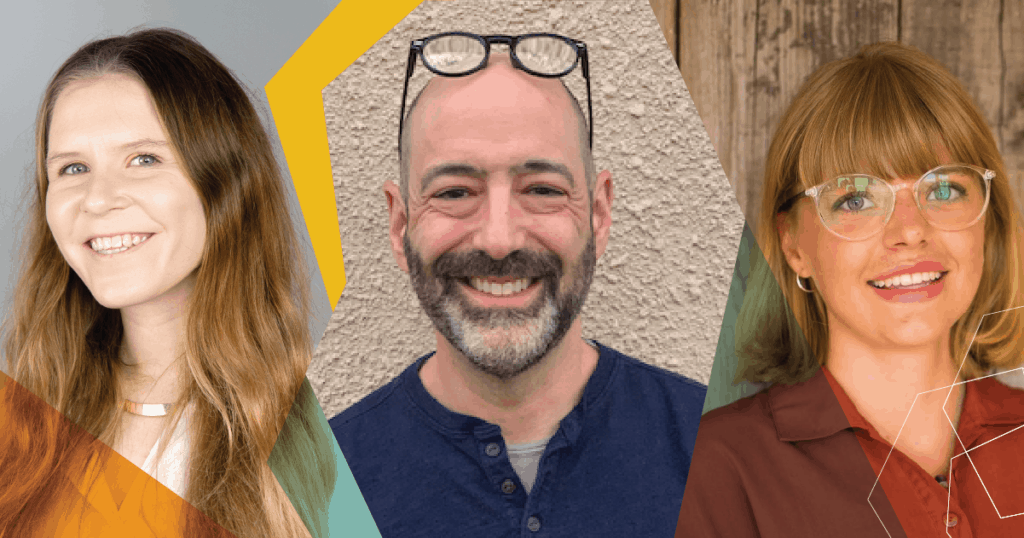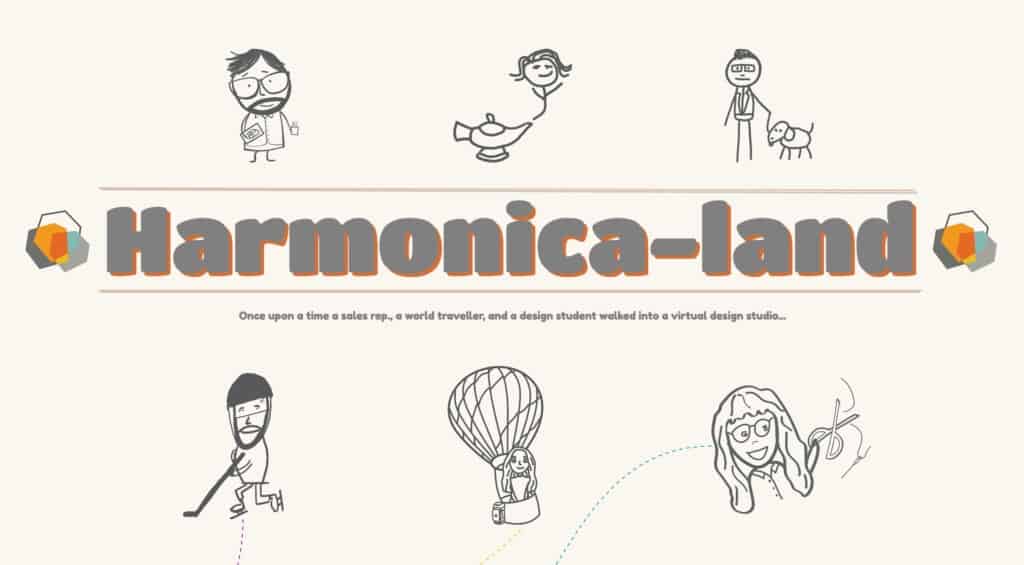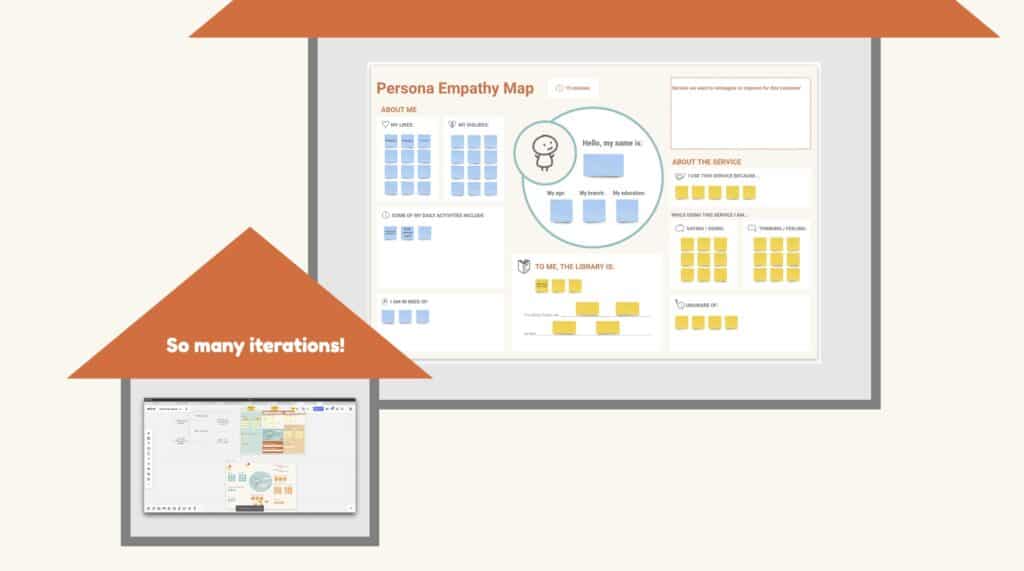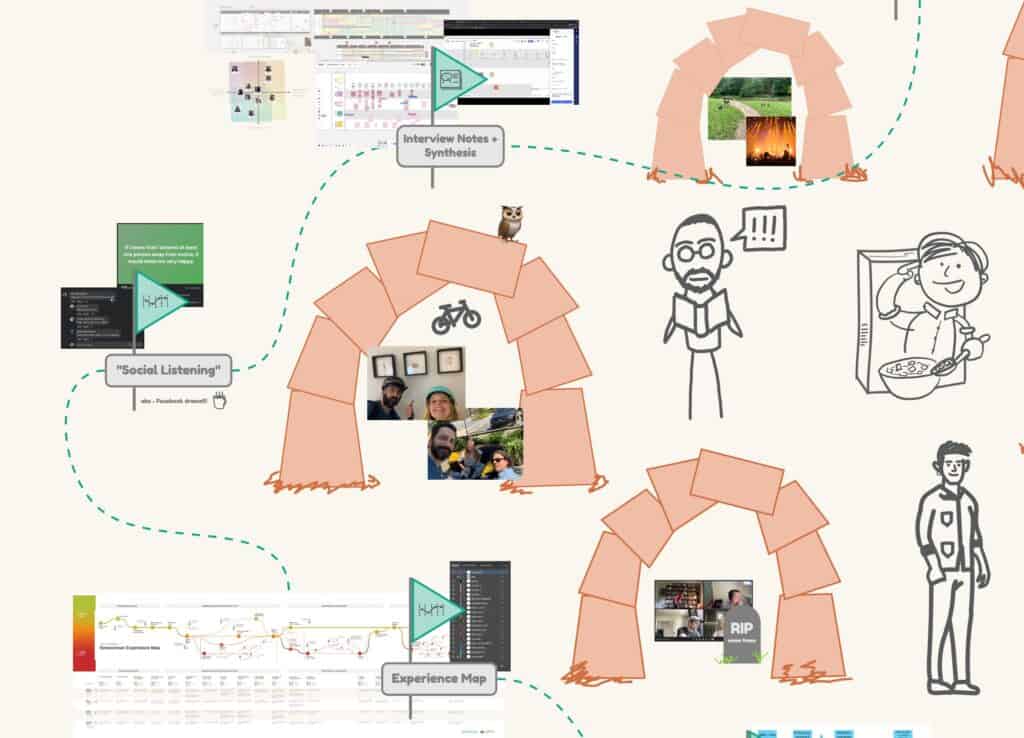Harmonic Design’s 2021 summer interns, Kate Ellis, David Russo, and Taft Weber-Kilpack, have enriched our work and culture this summer. In this post, they reflect on what they learned and their Harmonic experience. Their internship presentation incorporated a miro board highlighting key activities, projects, and insights (screenshots included below).

Question: What’s been the most rewarding aspect of your internship?
David
100% the people. The biggest guiding principle that I live by at this stage in my career is “Do good work with interesting people” and Harmonic has filled that bill. From a work perspective, it was being entrusted with ownership of jobs that weren’t just busy-work; rather they were integral to the relationship with the client (particularly the Library project). Also – the level of support I received from my team was amazing. They were invested in my success, and that gave me the confidence to move outside my comfort zone.
Kate
The trust Harmonicas had in me resulted in me developing an improved sense of confidence in my skills. When I was studying for my master’s degree, I put myself in a box: this is what I can do and this is what I cannot. Harmonic taught me not to trust that bias against myself because skills can be developed. The input I got from Harmonicas helped shape this growth experience and it was only possible because of them. I never thought I would be so comfortable being vulnerable in a virtual environment — Thanks Harmonic!
Taft
The relationships across the company and how it’s given me a space to make mistakes, ask questions, and boost my confidence in my abilities.
Everyone’s willingness to share their work, offer advice, or just talk about something interesting – made the work from home days fly by in a way I never expected.

Question: What surprised you the most about your internship?
David
It was somewhat surprising (in a good way) that I was in client meetings on Day 1, and was encouraged to participate. My team recognized that my unique perspective was valuable in the room.
Kate
That, even without meeting in person, I felt a deep sense of community. My intern buddy, Matias, told me that joining Harmonic is kind of like joining a club, and I couldn’t echo that more. Everyone makes the time to have a conversation with you and it made me realize just how much you learn from talking and sharing. Also, a huge shout out to my fellow interns, David and Taft, I was amazed at the level of camaraderie between us.
Taft
The way Harmonic is fully invested in supporting interns’ learning goals. It was obvious to me from the outset that we weren’t here to do busy work or minor tasks but to engage with the field of service design and develop our skills. I feel like it speaks to how invested Harmonic is in their practice and upskilling future practitioners.

Question: How would you describe Harmonic’s culture?
David
A company’s culture is ultimately a reflection of the people that work there. Harmonicas are intelligent, caring, funny, and passionate. I described the company to someone as “a merry band of misfits” – in the best way possible, Patrick and James welcome all-comers and embrace the diversity of their experiences.
Kate
Connected: You feel that your ideas are valued, as well as a sense of belonging. You are accepted as you are and encouraged to bring your authentic self to everything you do.
Nurturing: They not only want you to learn from them, but they also want you to teach them in the process.
Taft
Intentional + responsive. It’s so clear how much Patrick (PQ) and James and other early employees cared about creating a place they and their friends want to work at. It feels like that has been extended to each person as they’ve come into the company, it feels very welcoming.
One of the anecdotes I’ve been telling my friends when they ask about the internship: The first week, the client team had me fill out a little chart with how I work best and shared everyone else’s charts too. My team read it and remembered it and would bring up things from my chart later on, like the hours I work best or that I like to take walks during the day.
> Find out more about interning at Harmonic

